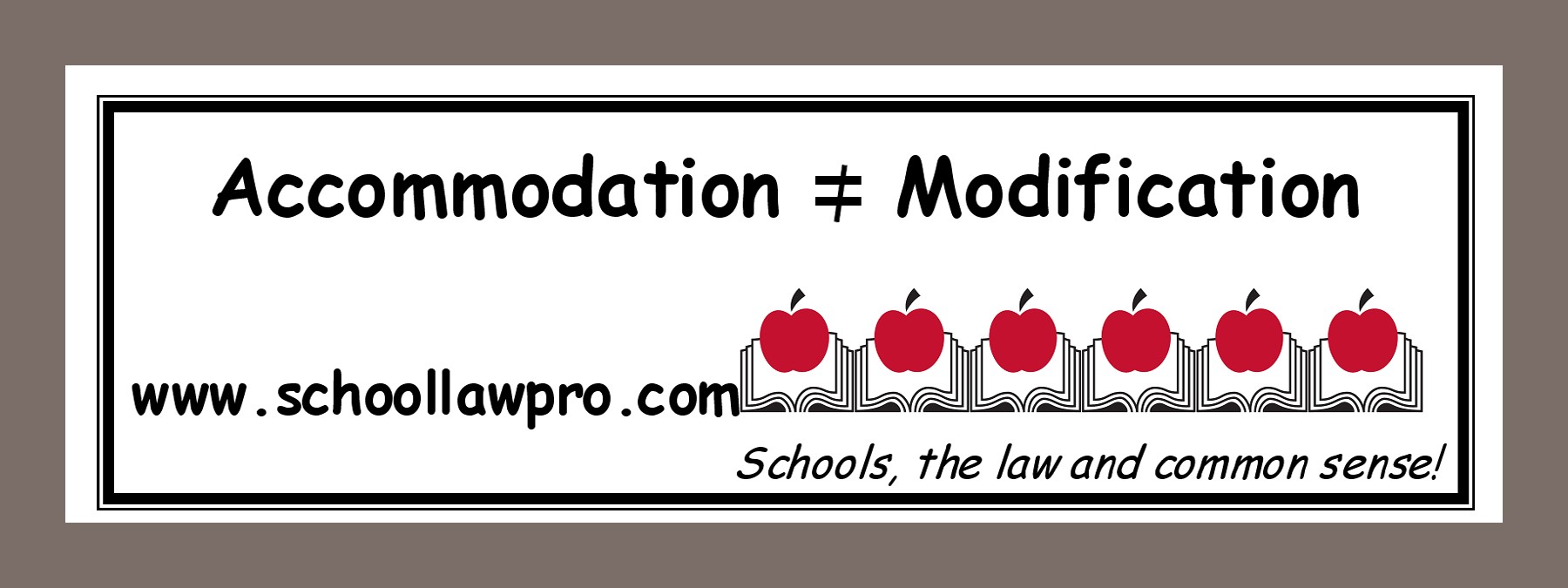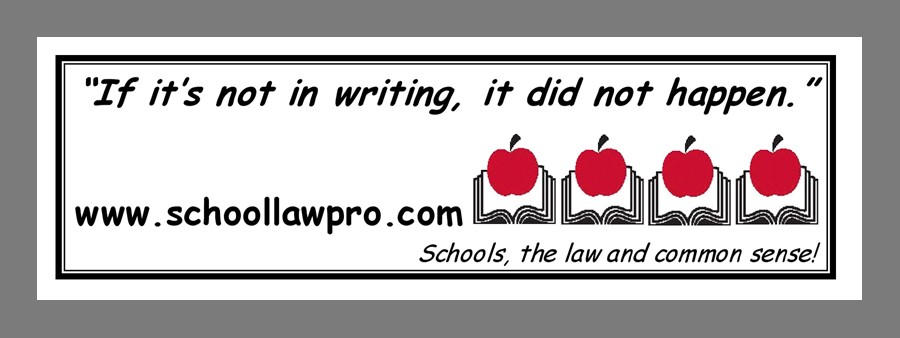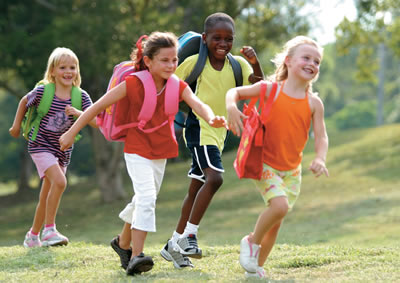 |
| image from:http://4.bp.blogspot.com/-1MNHTMBTpys/To3SPjriTrI /AAAAAAAAGv8/ZQBPkuLGhwY/s1600/teach.jpg |
Accommodations are defined as involving changes in instructional methods, including alterations in the format of assignments or tests, without changing content, that allows students with disabilities to do the same work as their typical peers in the classroom.
A modification is a change in the curriculum, for example assignments may be reduced in number. Accommodations and modifications are used in IEPs and 504 plans.
An adaptation is a change in the delivery of the lessons, the kind of accommodation or modification. These terms are used interchangeably and sometimes incorrectly by both parents and educators.
Accommodation Modification:
No change to curriculum Change to curriculum
Change in instructional methods Alternative or reduced
assignments
Intervention: Adaptation
Addition to cirriculum Change to delivery of
Data collected instruction
Here is a link to a comparison guide: http://kirkwoodschools.org/upload/4b69f57e40578.pdf
You want to be familiar with these terms so you can make sure you have them written in the documents that detail your child's education plan. Some things to include may be:
Accommodations:
Schoolwork and homework broken down into small steps
Instructions for assignments presented orally and in writing
Written assignments read aloud to student
Graphic organizers used to present material visually
Small group or individual testing assignments
Use word processor for writing assignments
Additional breaks during class
Extended time for assignments
Modifications:
Homework assignments reduced
Focus on functional skills curriculum
Alternate math or reading curriculum at student’s level
Alternate tests will be used
Shortened writing assignments
Interventions:
Social skills group
Reward chart for assignment completion, behavior, etc.
Visual schedule
Access to a counselor, social worker or therapist
Tutoring for specific academic skills
Speech therapy, occupational therapy, or physical therapy
Adaptations:
Either an accommodation – change in the delivery without changing
content,
or a modification – change of content
You can see how the actual help provided may be simple things but they must be documented. If you don't have it written down in an IEP or 504 then the teachers don't have to follow through with the changes to the learning environment needed to help the student get an education. They may not do this because they don't know how. This can also be addressed at the IEP meetings and meetings with your child's educators. This is why it is important to know which kind of change is being made and how it effects both the teacher and the student.
 |
| image from: http://schoollawpro.com/wp-content/uploads/2011/04/Accommodation1.jpghttp://schoollawpro.com/wp-content/uploads/2011/04/Accommodation1.jpg |
resources:
modification info: http://www.washington.edu/doit/Stem/articles?83
accommodations: http://www.connectwc.org/definitions.html
interventions: http://rtiteacher.blogspot.com/2008/11/interventionsaccomodations-whats.html
accommodations, adaptations, modifications: http://www.uic.edu/orgs/stepup/documents/March2005stepupnewsletter.pdf
useful educational interventions: http://www.aane.org/asperger_resources/articles/education/educational_interventions_asperger.html
accommodations, adaptations, modifications: http://www.uic.edu/orgs/stepup/documents/March2005stepupnewsletter.pdf
useful educational interventions: http://www.aane.org/asperger_resources/articles/education/educational_interventions_asperger.html
Special Thanks to SensiGirl's teacher for checking that I got this right.








































